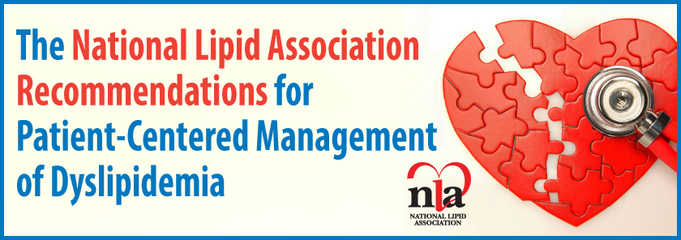夜间间歇性低氧血症与患者的血脂异常独立相关
有越来越多的来自动物模型的证据显示,间歇性低氧血症(IH)可引起血脂异常。而脂质代谢的改变可能与人们在阻塞性睡眠呼吸暂停(OSA)患者中观察到心血管风险增加相关。为了验证阻塞性睡眠呼吸暂停患者的夜间间歇性低氧血症与其血脂异常存在独立相关性的假说,来自于法国昂热市lunam大学、昂热大学医院呼吸科、法国国家健康与医学研究院1063组(INSERM U1063)的Wojciech Trzepizur博士及其同事进行了一项研究,研究结果在线发表于《胸部》(CHEST)杂志上。作者发现:夜间间歇性低氧血症与患者的血脂代谢障碍独立相关,利用这一特点,人们可以预测出具有较高心血管疾病风险的阻塞性睡眠呼吸暂停患者。
该研究是一项多点横断面研究,研究对象主要为2,081例(其中638例为女性)临床上怀疑为阻塞性睡眠呼吸暂停,且进行了夜间相关记录的患者。研究者为这些患者进行了空腹血脂水平测定,并在对包括代谢综合征(MS)本身或其组成成分等在内的、潜在的混杂因素进行了统计学校正后,使用多元回归分析法对患者的氧减饱和度指数(ODI)与其血脂状况的独立相关性进行了评估。研究者将血脂代谢障碍(MD)定义为:甘油三酯(TG)≥150毫克/分升和女性高密度脂蛋白胆固醇(HDL-c)≤50毫克/分升(男性为,≤40毫克/分升)。并使用Logistic回归分析法,根据患者氧减饱和度指数的四分位数确定了其经统计学校正后的血脂代谢障碍的比值比(OR)。
该研究的主要结果为:患者的总胆固醇和低密度脂蛋白胆固醇与其氧减饱和度指数无相关性。与此相反,在对混杂因素进行了统计学校正后,患者的夜间间歇性低氧血症及阻塞性睡眠呼吸暂停的严重程度等则与其高甘油三酯水平及低高密度脂蛋白胆固醇水平有相关性。而且其氧减饱和度指数与甘油三酯和高密度脂蛋白胆固醇之间的相关性是独立于代谢综合征之外而存在。对于氧减饱和度指数为≤7,>7且≤18,>18且≤38,及>38的患者,其经统计学校正后的血脂代谢障碍的让步比(95%置信区间)分别为1(参考值),1.56(1.24~1.96),1.72(1.29~2.29),及1.93(1.55~2.41)(P <0.0001,呈线性趋势)。
该研究结果显示:夜间间歇性低氧血症与患者的血脂代谢障碍独立相关,利用这一特点,人们可以预测出具有较高心血管疾病风险的阻塞性睡眠呼吸暂停患者。
Independent association between nocturnalintermittent hypoxemia and metabolic dyslipidemia
Wojciech Trzepizur123, MD; Marc Le Vaillant4, PhD; NicoleMeslier123, MD; Thierry Pigeanne5, MD; Philippe Masson6, MD; Marie P. Humeau7,MD; Acya Bizieux-Thaminy8, MD; François Goupil9, MD; Sylvaine Chollet10, MD;Pierre H. Ducluzeau1211, MD, PhD; Frédéric Gagnadoux123, MD, PhD;
Background: There is growing evidence from animal modelsthat intermittent hypoxemia (IH) may induce dyslipidemia. Altered lipidmetabolism may contribute to the increased cardiovascular risk observed inobstructive sleep apnea (OSA). In this multisite cross-sectional study, wetested the hypothesis of an independent association between nocturnal IH anddyslipidemia in OSA. Methods: Fasting serum lipid levels were measured in 2,081patients (638 females) undergoing nocturnal recording for clinical suspicion ofOSA. Multivariate regression analyses were performed to evaluate theindependent associations between oxygen desaturation index (ODI) and lipidprofile after adjustment for potential confounders including components of themetabolic syndrome (MS) or MS itself. Adjusted odds ratio (OR) for metabolicdyslipidemia (MD) (triglycerides [TG]≥150 mg/dL and high-density lipoproteincholesterol [HDL-c]≤50 mg/dL for women and ≤40 mg/dL for men) according toquartiles of ODI were determined by logistic regression. Results: Totalcholesterol and LDL cholesterol were not associated with ODI. In contrast,nocturnal IH and OSA severity were associated with higher TG levels and lowerHDL-c levels after adjustment for confounding factors. The association betweenODI and TG and HDL-c was independent of the MS. Adjusted OR (95% confidenceintervals) for MD were 1 (reference), 1.56 (1.24 to 1.96), 1.72 (1.29 to 2.29),and 1.93 (1.55 to 2.41) for ODI≤7, >7 to ≤18, >18 to ≤38, and >38,respectively (P<0.0001 for linear trend). Conclusions: Nocturnal IH isindependently associated with MD that may predispose OSA patients to a higherrisk of cardiovascular disease.
 此主题相关图片如下:1.png
此主题相关图片如下:1.png